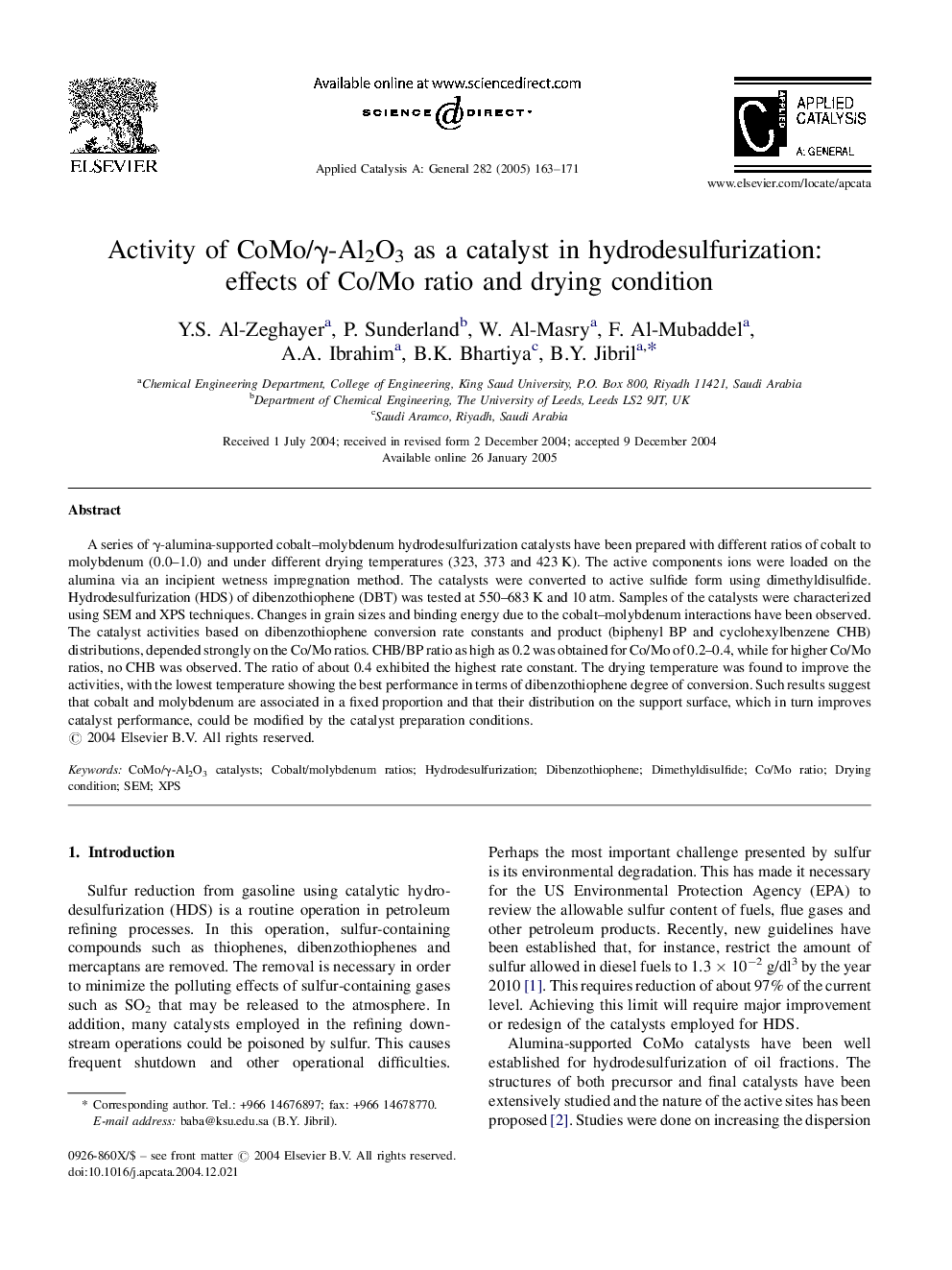| Article ID | Journal | Published Year | Pages | File Type |
|---|---|---|---|---|
| 9608050 | Applied Catalysis A: General | 2005 | 9 Pages |
Abstract
A series of γ-alumina-supported cobalt-molybdenum hydrodesulfurization catalysts have been prepared with different ratios of cobalt to molybdenum (0.0-1.0) and under different drying temperatures (323, 373 and 423 K). The active components ions were loaded on the alumina via an incipient wetness impregnation method. The catalysts were converted to active sulfide form using dimethyldisulfide. Hydrodesulfurization (HDS) of dibenzothiophene (DBT) was tested at 550-683 K and 10 atm. Samples of the catalysts were characterized using SEM and XPS techniques. Changes in grain sizes and binding energy due to the cobalt-molybdenum interactions have been observed. The catalyst activities based on dibenzothiophene conversion rate constants and product (biphenyl BP and cyclohexylbenzene CHB) distributions, depended strongly on the Co/Mo ratios. CHB/BP ratio as high as 0.2 was obtained for Co/Mo of 0.2-0.4, while for higher Co/Mo ratios, no CHB was observed. The ratio of about 0.4 exhibited the highest rate constant. The drying temperature was found to improve the activities, with the lowest temperature showing the best performance in terms of dibenzothiophene degree of conversion. Such results suggest that cobalt and molybdenum are associated in a fixed proportion and that their distribution on the support surface, which in turn improves catalyst performance, could be modified by the catalyst preparation conditions.
Related Topics
Physical Sciences and Engineering
Chemical Engineering
Catalysis
Authors
Y.S. Al-Zeghayer, P. Sunderland, W. Al-Masry, F. Al-Mubaddel, A.A. Ibrahim, B.K. Bhartiya, B.Y. Jibril,
